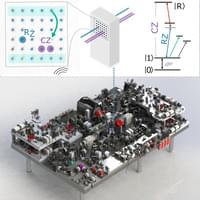Kat Zhang is back!





Legacy Auto’s Desperation vs. Tesla’s Dominance.
## Abstract.
In the accelerating automobility transformation, legacy automakers like Ford—grappling with $12 billion in EV losses since 2023, including $2.2 billion in H1 2025 and projections up to $5.5 billion for the year—desperately seek Tesla’s technological lifelines, yet Tesla has scant incentive to license its Full Self-Driving (FSD) system.
This report unveils the Darwinian imbalance: Tesla’s unassailable edge in 4.5 billion FSD miles (adding millions daily), propelling intelligent vehicles (IVs) to 10x safer than humans; poised to eliminate over 1 million annual global road deaths, 50 million injuries, and $4 trillion in economic damage annually.
Bolstered by vertical integration, unboxed manufacturing for sub-$30,000 Cybercabs at unprecedented rates, a 70,000+ connector Supercharger network, and robotaxi economics unlocking a $10 trillion market by 2029, Tesla dominates—hastening an 80% decline in private ownership by 2030 per Tony Seba, fostering shared fleets, urban digital twins, and integrated energy systems for sustainable communities worldwide.
Discover why legacy desperation fuels Tesla’s triumph in reshaping transportation.
[Get The Imbalance in Automobility Transformation White Paper](https://cdn.shopify.com/s/files/1/1295/2229/files/The_Imbala…756222023)




Earlier this year, the company confirmed that its next-generation rack-scale AI platforms will abandon pluggable optical modules in favor of co-packaged optics. At the Hot Chips conference, Nvidia shared new details about its upcoming photonic interconnect products – Quantum-X and Spectrum-X Photonics – scheduled for launch in 2026 for InfiniBand and Ethernet, respectively.

In the 17th century, German astronomer Johannes Kepler figured out the laws of motion that made it possible to accurately predict where our solar system’s planets would appear in the sky as they orbit the sun. But it wasn’t until decades later, when Isaac Newton formulated the universal laws of gravitation, that the underlying principles were understood.
Although they were inspired by Kepler’s laws, they went much further, and made it possible to apply the same formulas to everything from the trajectory of a cannon ball to the way the moon’s pull controls the tides on Earth—or how to launch a satellite from Earth to the surface of the moon or planets.
Today’s sophisticated artificial intelligence systems have gotten very good at making the kind of specific predictions that resemble Kepler’s orbit predictions. But do they know why these predictions work, with the kind of deep understanding that comes from basic principles like Newton’s laws?
